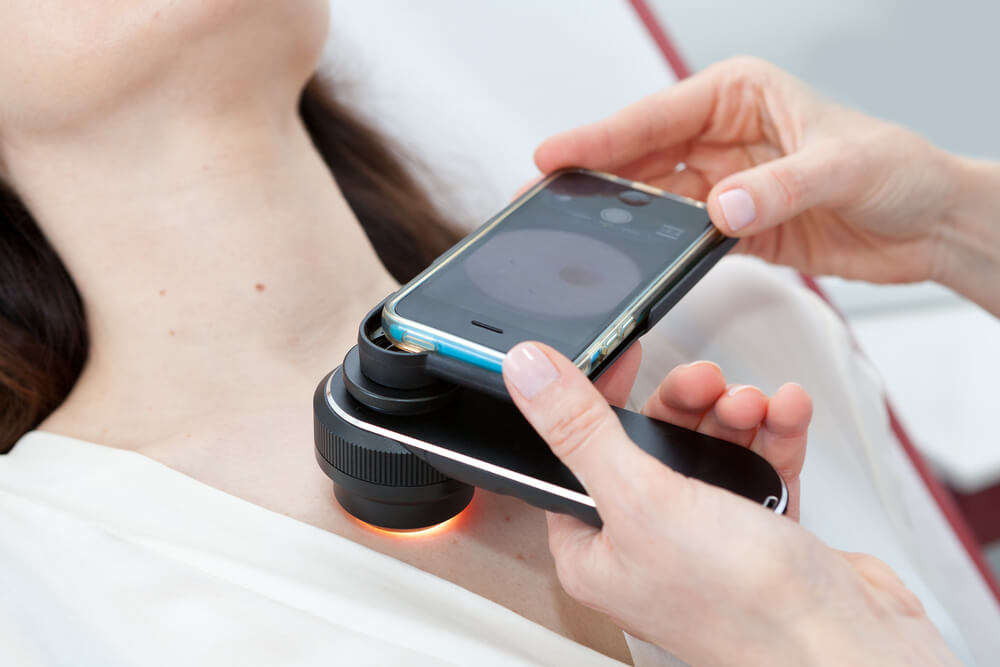Check out our latest blog article: From component to enterprise – modular robotics done right.

Firmware for a Custom Skin Cancer Screening Device
Detects malignant skin growth without a biopsy
The client is a medical device company specializing in skin cancer screening. They wanted to launch a handheld gadget for detecting skin cancer on the fly. The solution would help physicians and non-experts to analyze suspect skin lesions.
Case Highlights
-
Incorporates a FPGA-powered handheld device based on the Qualcomm Snapdragon SD410 processor
-
Is driven by embedded software
-
Includes hardware components such as an audio speaker, accelerometer, and display
-
Captures LED light signal variations and translates them into a visual diagram in real time
-
Monitors the vascular refilling rate and proceeds with a custom algorithmic data analysis
Project Information
Fixed Price
Waterfall
Firmware Developers
QA Lead
Business Analyst
QA Engineer
Project Manager
Problem
Veriskin decided to build a device that uses ML algorithms for non-invasive skin cancer detection. They turned to Softeq to test the viability of their idea.
Our team was employed to deliver a proof of concept (PoC) and develop firmware components powering the device.
Solution

Overview
The solution is a complex Wi-Fi-enabled system that incorporates:
- A FPGA-powered handheld device based on the Qualcomm Snapdragon SD410 processor complete with LEDs
- Embedded software
- Hardware components: audio speaker, accelerometer, and display (among others)
Equipped with 2 photodetectors and a force sensor, the solution captures LED light signal variations and translates them into a visual diagram in real time.
To diagnose the suspect lesion’s condition, the system monitors the vascular refilling rate and proceeds with a custom algorithmic data analysis complete with a plain report output on the UI.
Firmware and Software Functionality
- Audiovisual guide with error messaging
- Calibrated LED lights maximizing photodetector sensitivity
- Memory capacity for 100+ test results downloadable via USB or BLE
- Custom Linux BSP and drivers
- Built-in flash memory-based software
- Optimized Linux boot-time
- Firmware updates via the USB
- Secure login (SSH protocol)
Similar Project Idea?
Explore how you can leverage custom firmware development to integrate your devices into a cohesive IoT system Learn more
Result
Project Outcomes
The resulting solution was expected to participate in rigorous clinical testing across US dermatological institutions. The system showed the capability of detecting malignant skin growth without extra biopsies or examinations. The device was meant to cut healthcare-associated costs by providing a low-cost and prompt cancer diagnostics method.
Related Cases





